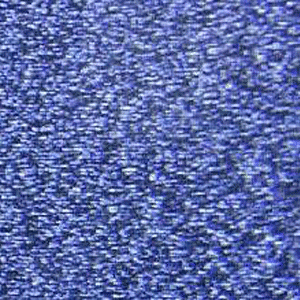PRO·PA·GAN·DA: a primer for identification
There has been considerable discussion on Kuro5hin.org recently surrounding media bias, propaganda and advertising. But what is propaganda and how can we tell?
Analysis of discourse sheds light on both the motivations of actors and the credibility of their Reality. I believe biased accounts of events, root causes, history and Reality are inevitable because every actor and individual has preferences which influences the choice of facts, values and logic. Bias, however, is not synonymous with propaganda. Nor are biased accounts and propaganda useless in constructing reliable versions of the truth if one is able to critically analyze them in context.
“Propaganda is an attempt to persuade people without seeming to do so.” [1]
The belief that the control of information grants the control of reality is not new. George Orwell‘s 1984 is probably the most widely read work asserting that whomever controls the present controls the past, and whoever controls the past controls the future. Morgenthau argued that Reality is constructed by “the evidence of history as our minds reflect it”; “actual history” and “self-serving fairy tales” are one and the same. History is “the abuse of reality.”[Morgenthau] I assume that the manipulation of available information can and will be employed to construct a common Reality and manipulate populations. However, I believe it is possible to establish facts and (elite) actor’s motivations by examining a range of news, opinion and testimony, in mass media and institutional publications, for the signs of information manipulation and propaganda. I prefer to focus on propaganda as a political tool, though cultural change models have been proposed by various physical and social sciences (e.g. memetics).
When investigating a topic I use a model of progressive propaganda identification proposed by J. Michael Sproule in CHANNELS OF PROPAGANDA. Sproule states that propaganda commonly meets four conditions of mass persuasion:
- the pursuit of a special interest;
- manipulation through covertness;
- massive orchestration;
- distortion through “tricky” language. [2]
SPECIAL INTEREST
Many believe that the pursuit of a special interest (as opposed to the public interest) is integral to the definition of propaganda.[3] It should be self-evident that there is frequently disagreement over what is in the public interest. Even the “competition of propagandas”, according to sociologist Fredrick Lumley, leaves the public malnourished on a diet of prepackaged conclusions; [4] disinformation and manipulation are always enemies of reasoned discussion.COVERTNESS
The US government’s psychological warfare (PSYWAR) divisions use the extent of covertness to distinguish between types of propaganda. Beginning with accurate information and open sources (White Propaganda), passing through biased treatments and suspect sources (Grey Propaganda), and ending with outright falsehoods and disinformation (Black Propaganda), the PsychWar scale covers the full range of print media. To the public the three PsychWar categories are virtually indistinguishable – that is the intention. “The essential evil of propaganda is failure to disclose the source of information”,[5] a frequent failure (IMHO) of today’s press.
MASSIVE ORCHESTRATION
“If covertness is the first defining characteristic of propaganda, a second essential feature is the massive orchestration of communication. Modern conditions seem to demand that we characterize propaganda as large-scale symbolic orchestration to distinguish it from persuasion, a term which is easily applicable to single speeches and essays.”[6]
Channels of Propaganda, p. 4-5
At the risk of being labeled a sensationalist, I offer the following: Bias differs propaganda in the same way homicide differs from mass murder. The first pair result in a manipulative message and second pair result in death. But bias and homicide are isolated unintentional, and individually have minimal impact on the society as a whole, whereas propaganda and mass murder are intentional and widely implemented, and have devastating impacts on the society as a whole. Parallels in popular American culture include the bias of the “liberal reporter” and the propaganda of the “vast right-wing conspiracy” (the mythical natures of which I’m not inclined to rule upon).TRICKY LANGUAGE
“Any persuasive devices that help short-circuit logic” and discourages reflective thought is associated with propaganda. [7] The “tricky language test” requires that, in order to avoid being considered propaganda, a text must be devoid of the following seven techniques identified by the Institute for Propaganda Analysis:
One final tactic of propaganda that is widely recognized, although it was not identified by the IPA, is that it ought to instill doctrines and conclusions by constantly presupposing (but never articulating) them. Said conclusion should become “the very condition for discourse” [Chomsky] “without [the] support of developed reasons or arguments.” [Sproule]ANALYSIS IN APPLICATION
“The folks in the FARC are so removed from reality that meeting with senior diplomats can’t harm.”
US State Department official, quoted n the July 10 2000 Canadian edition of TIME MAGAZINE.
I first used these analysis tools when researching political economy papers on the Colombian civil war. The second of these papers, “Colombia To Be Another Vietnam? We Should Be So Lucky!“, is online with citations. I don’t hold it up as a model for others but instead as an example how propaganda analysis can aid the understanding of actor’s Reality and the many facets of an issue. UN-LINKED CITATIONS (also see RELATED LINKS)
[1] J. Michael Sproule, Channels of Propaganda. EDINFO Press and ERIC Clearinghouse on Reading. Bloomington IN. 1994. pp 3.
[2] Channels of Propaganda. pp 5
[3] Channels of Propaganda. pp 7
[4] Channels of Propaganda. pp 6
[5] Channels of Propaganda. pp 4-5
[6] Channels of Propaganda. pp 4-5
[7] Channels of Propaganda. pp p.5
[Chomsky] letter by Noam Chomsky to Lies Of Our Times (LOOT), 1.5. May 1990. see RELATED LINKS
[Sproule] Channels of Propaganda. pp 5. see RELATED LINKS
[Morgenthau] quoted by Noam Chomsky. letter to Lies Of Our Times (LOOT), 1.5. May 1990. see RELATED LINKS
[Originally published on Kuro5hin.org: PRO·PA·GAN·DA: a primer for identification]
